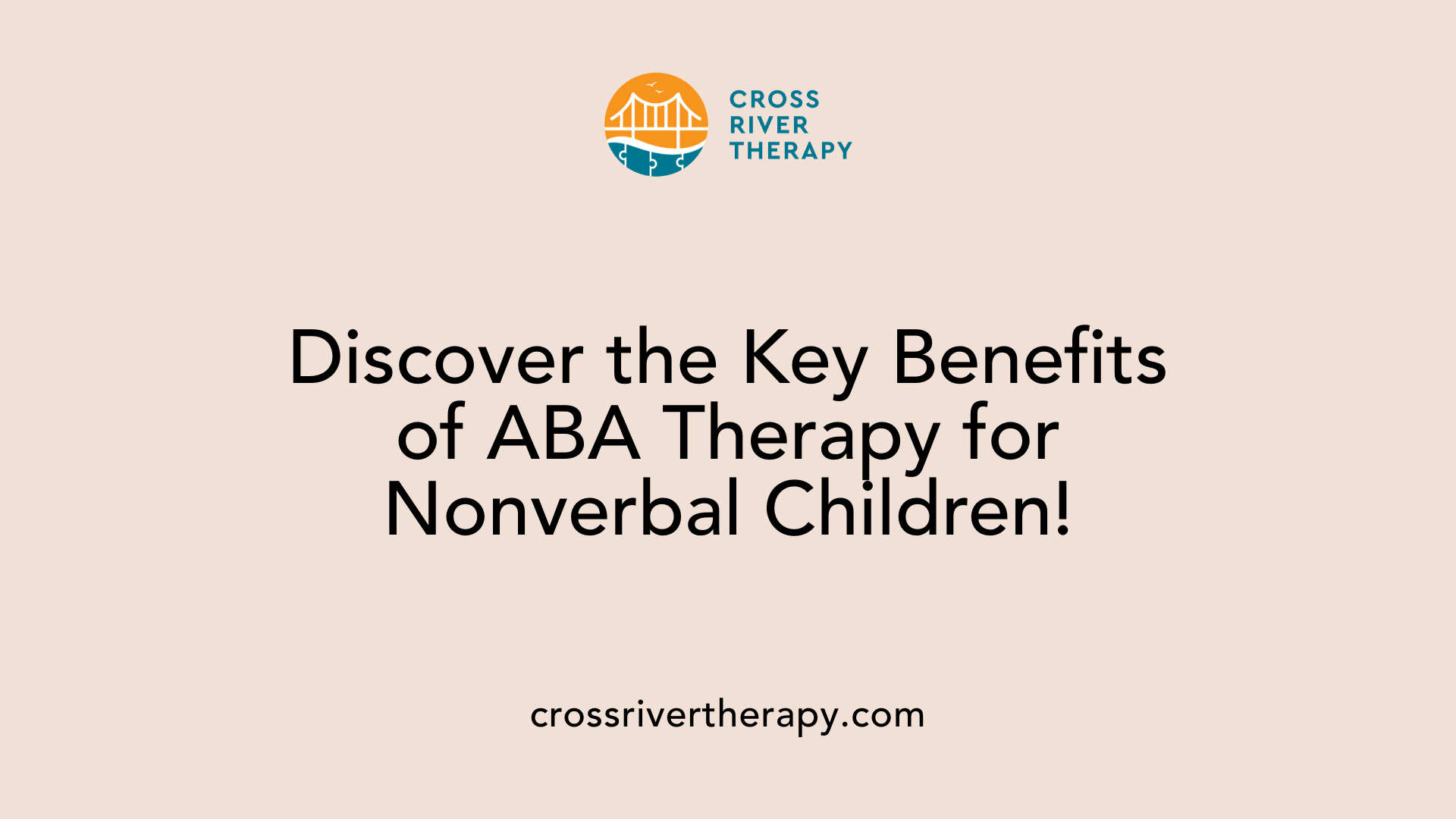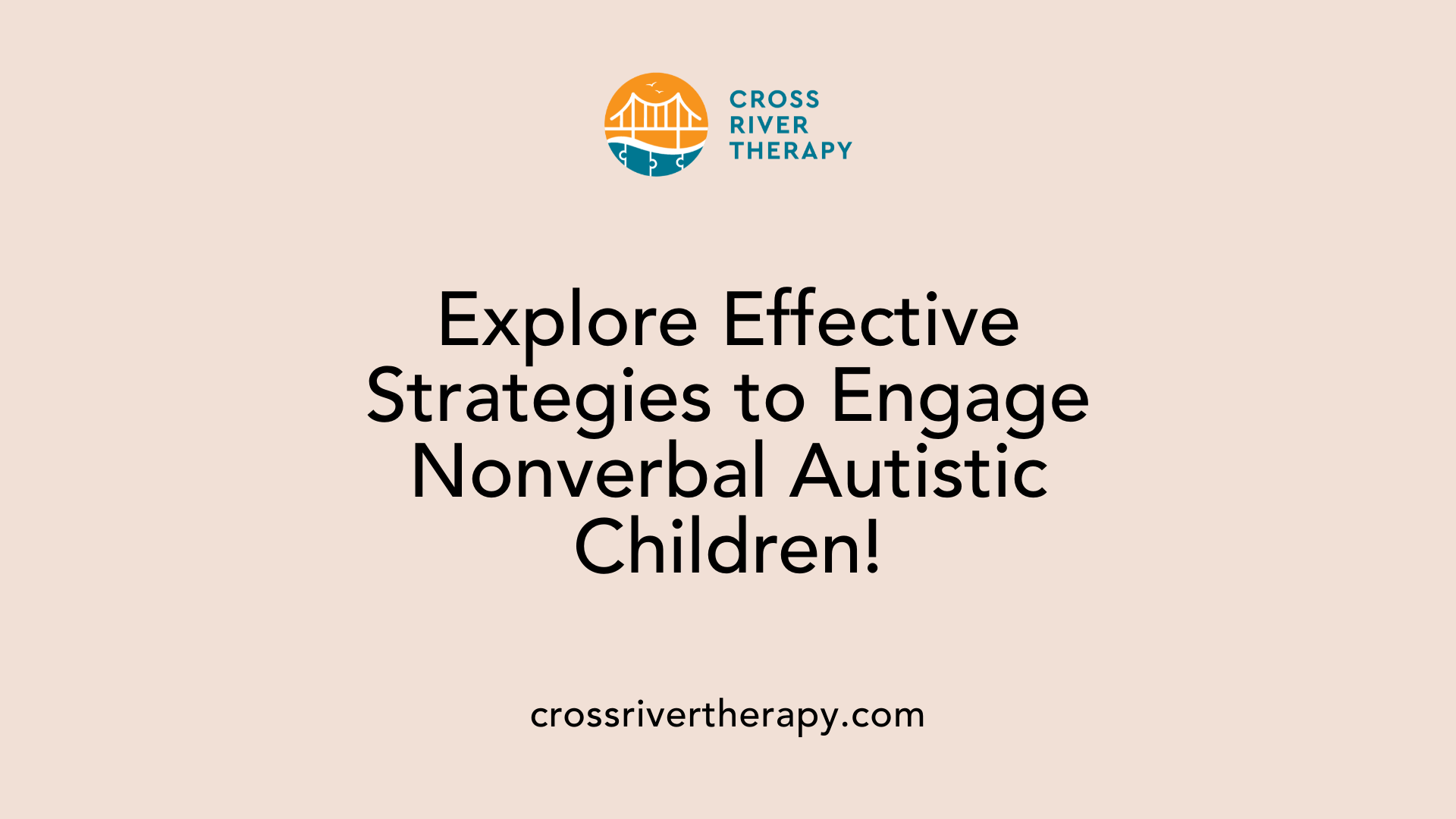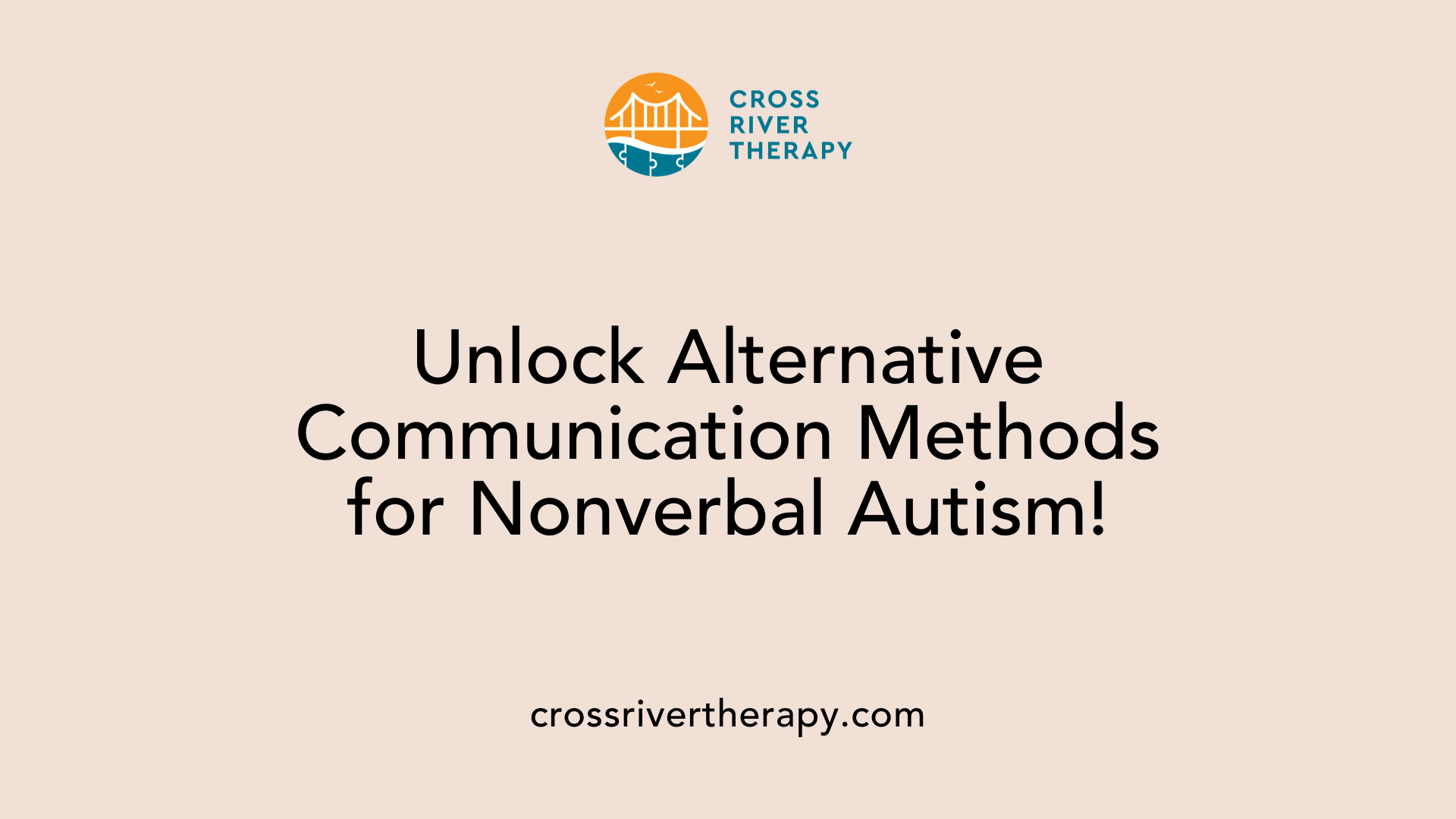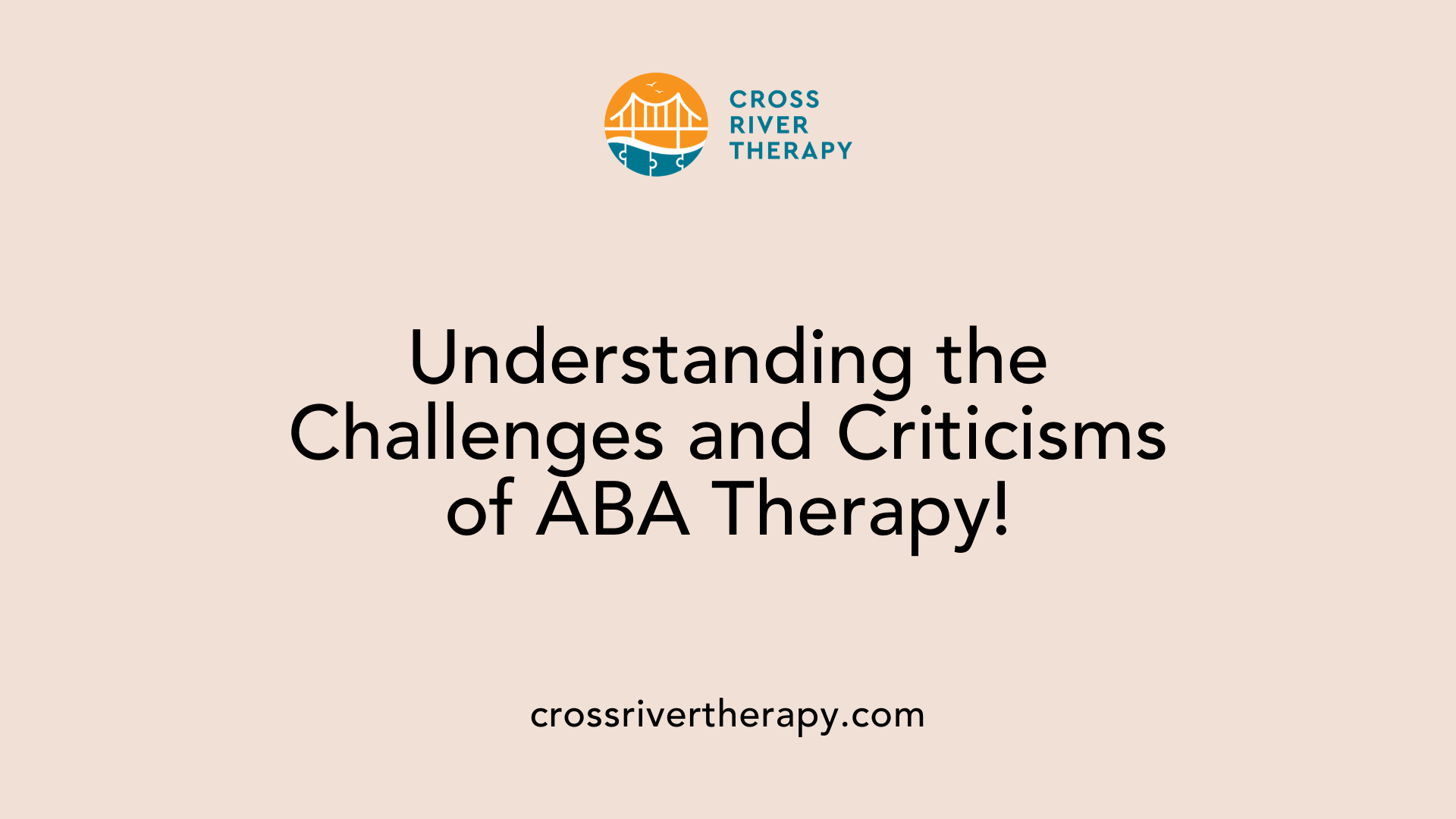Understanding ABA Therapy for Non-Verbal Children
Applied Behavior Analysis (ABA) therapy stands as a cornerstone in the intervention for non-verbal children, particularly those with autism spectrum disorder (ASD). This therapeutic approach employs evidence-based methods to improve communication skills and foster independence. Through positive reinforcement and tailored strategies, ABA therapy aims to address the unique challenges faced by non-verbal children, promoting language development and social interaction.
The Role of ABA Therapy in Communication Development

What is ABA therapy for nonverbal children?
ABA therapy, or Applied Behavior Analysis, is a crucial early intervention method for nonverbal children with autism spectrum disorder (ASD). It focuses on using positive reinforcement to encourage desired behaviors and teach new skills, fostering independence and improving communication attempts. Through structured and individualized approaches, ABA therapy helps build essential communication skills, particularly for nonverbal children.
Positive reinforcement techniques
In ABA therapy, positive reinforcement plays a significant role in helping children learn. Therapists use rewards, such as praise or tokens, to reinforce desired communication behaviors. For example, a nonverbal child might receive a token for using a picture card to express their needs. This approach not only motivates children to communicate but also helps them understand the connection between their actions and positive outcomes.
Use of sign language and visual aids
In conjunction with ABA therapy, sign language and visual supports, such as flashcards, are highly effective tools. These resources create clear pathways for nonverbal children to express their wants and needs, significantly reducing frustration. Visual aids provide concrete representations of concepts, making it easier for children to understand and engage with their environment.
Early intervention benefits
Early intervention plays a vital role in language and communication development. It has been shown that interventions starting before age four lead to better outcomes in IQ, social skills, and overall communication abilities. As many nonverbal children grow, these early sessions lay a strong foundation for future language acquisition and social interaction, ultimately leading to improved developmental outcomes for children on the autism spectrum.
Exploring Nonverbal Indicators in Child Development
Can a child be nonverbal and not autistic?
Yes, a child can be nonverbal and not autistic. Nonverbal communication varies widely among children, and several factors can influence this aspect of development.
Differences between nonverbal and autistic
While many autistic children may be nonverbal, being nonverbal does not automatically equate to autism. Various conditions, such as hearing impairments or cognitive disabilities, can contribute to delayed speech. It’s crucial to look at a child's overall development, including social interactions and play abilities, rather than focusing solely on speech.
Identifying nonverbal cues
Understanding nonverbal cues is essential in assessing communication progress. Nonverbal behaviors, like gestures, facial expressions, and eye contact, serve as fundamental building blocks for expressing needs and feelings in children.
Other causes for delayed speech in children
Other reasons for delayed speech can encompass sensory processing issues, developmental delays, or specific learning disabilities. Parents noticing signs of delayed communication should consult with a pediatrician to explore all possibilities.
| Factors Affecting Nonverbal Communication |
Characteristics |
Considerations |
| Autistic Spectrum Disorders |
May involve challenges with social engagement |
Look for consistent patterns |
| Hearing Issues |
Can prevent sound recognition and response |
Hearing tests are essential |
| Cognitive Delays |
Might affect overall learning and interaction |
Assess cognitive development |
| Environmental Factors |
Lack of stimulation or interaction in early years |
Encourage play-based learning settings |
Engaging Nonverbal Autistic Children: Effective Strategies

How do you engage nonverbal autistic children?
Engaging nonverbal autistic children can be effectively achieved through a variety of strategies focused on interaction and communication. Encouraging play and social interaction enhances opportunities for communication. This is especially effective when adults engage at the child's eye level, promoting a sense of connection.
One of the most powerful methods is imitating the child's sounds and play behaviors, which fosters interaction through turn-taking. This not only encourages communication but also validates the child's actions, making them feel understood and appreciated.
Nonverbal communication, such as gestures and eye contact, lays the groundwork for future language development. Modeling these behaviors is crucial; for instance, using hand gestures or maintaining eye contact can communicate warmth and attentiveness. Eye contact can enhance the emotional connection, helping the child feel more engaged in the interaction.
Role of imitation in language learning
Imitating your child’s sounds and actions is a key technique in language learning. This approach creates a reciprocal relationship where the child feels invited to communicate. As the child becomes comfortable with imitation games, they are encouraged to express themselves, which enhances their language skills over time.
Incorporating these strategies not only supports communication but also enriches the child’s interaction in a fun and engaging manner. Combining these approaches with assistive devices and visual supports can dramatically improve a nonverbal child's ability to express their needs and thoughts.
Adaptive Communication Methods for Nonverbal Autism

Importance of Speech Therapy
Speech therapy holds a vital role for nonverbal children with autism, enabling the development of alternative communication methods. Techniques like sign language, picture exchange systems, and assistive technology are emphasized. Early intervention is crucial since studies show nonverbal children have the potential for significant improvement in communication when they receive timely support. The goal of speech therapy is to enhance not only verbal skills but also non-verbal expressions, thereby improving a child’s ability to interact socially.
Alternative Communication Methods
For many nonverbal children, exploring various communication avenues is essential. Augmentative and Alternative Communication (AAC) systems, like devices that generate speech or use pictures, provide valuable resources. Picture Exchange Communication System (PECS) exemplifies this, facilitating a means for children to express needs through images. Such methods reduce frustration and foster better relationships, leading to more effective interpersonal communication.
Individualized Therapy Approaches
Each child with autism presents distinct communication challenges, necessitating personalized therapy approaches. Individualized programs allow therapists to tailor interventions that suit the child's specific abilities and needs. Techniques such as Functional Communication Training (FCT) help replace problematic behaviors with functional communication forms. This focus on adaptability ensures that unique traits and preferences are respected, fostering an environment where communication can thrive.
Discrete Trial Training (DTT)
Discrete Trial Training (DTT) is a structured method commonly used in ABA therapy, focusing on skill acquisition through repetition and rewards. In practice, this technique involves breaking down tasks into small, manageable components. For instance, teaching a child to recognize colors might involve showing them a color card and providing praise or tokens when they identify it correctly. This trial-based approach enhances learning by reinforcing positive behaviors each time a child responds correctly.
Use of Visual Supports and Stories
Visual supports play a critical role in ABA interventions, particularly for non-verbal children with autism. Tools such as picture cards, flashcards, and social stories help convey information visually. For example, social stories outline expected behaviors in specific situations, enabling children to navigate social contexts more effectively. These resources not only aid comprehension but also reduce anxiety by providing a clear structure.
Role of Augmentative and Alternative Communication
Augmentative and Alternative Communication (AAC) systems are vital for non-verbal children, allowing them to express needs and thoughts through various mediums like communication apps, picture symbols, or sign language. Integrating AAC into ABA therapy supports language development and enhances communication by providing alternatives when verbal language is not an option. Through these strategies, therapy becomes more personalized, fostering effective communication tailored to the child’s unique needs.
| Technique/Tool |
Purpose |
Benefits |
| Discrete Trial Training (DTT) |
Skill acquisition through repetition and reinforcement |
Increases target behavior through structured tasks |
| Visual Supports and Stories |
Aids comprehension and reduces anxiety |
Provides clear expectations and emotional understanding |
| Augmentative and Alternative Communication (AAC) |
Offers alternative means to communicate |
Enhances expression and supports language development |
Challenges and Criticisms of ABA Therapy

Concerns about Compliance and Motivation
One of the primary criticisms of ABA therapy is the focus on compliance over genuine communication. Critics argue that some methods may lead to children participating only out of a desire to please adults or receive rewards, potentially stifling their innate motivation to communicate.
Need for Flexible and Naturalistic Approaches
Many believe that ABA can be overly repetitive, stressing the need for approaches that celebrate individuality and promote naturalistic interactions rather than rote learning. Flexible strategies that prioritize interests and strengths of non-verbal children can foster authentic engagement and rapport.
Balancing with Other Therapies
There is concern about relying solely on ABA therapy, which may compete with equally valuable therapies, such as speech and language therapy. Advocates argue for an integrated approach where ABA complements other interventions, allowing for a well-rounded development of communication skills and personal expression.
Summary Table
| Concern |
Description |
| Compliance & Motivation |
Focus on external rewards may lead to dependency rather than intrinsic motivation. |
| Naturalistic Approaches |
Emphasis on flexible strategies that fit the child's unique style. |
| Therapy Balance |
Need for integrating ABA with other treatment modalities for holistic care. |
Holistic Approaches to Language Development

Interconnected Factors like Feeding and Sleep
Language development in non-verbal children with autism does not occur in isolation. Factors such as feeding routines and sleep patterns play a significant role. These elements can influence a child’s mood and energy levels, ultimately impacting their ability to engage in learning activities. By addressing these foundational aspects, caregivers can create a more supportive environment for language acquisition.
Patience and Simplified Language
Patience is a virtue when it comes to fostering communication in non-verbal children. Allowing time for children to process spoken language is essential. Simplifying language—using short sentences and familiar words—facilitates understanding. This approach encourages children to respond more effectively, as they feel less pressured and more comfortable engaging in communication.
Parental Collaboration and Consistency in Therapy
Collaboration between parents, therapists, and educators enhances the effectiveness of any intervention. Consistent reinforcement of communication strategies across different environments helps solidify learning. Parents can integrate these communication practices during daily activities, reinforcing the skills taught in therapy sessions. Celebrating small milestones in language progress promotes motivation and builds a positive atmosphere conducive to learning.
Additional Insights
A table illustrating these holistic approaches can provide further clarity:
| Aspect |
Strategy |
Benefits |
| Interconnected Factors |
Address routines (feeding, sleep) |
Improved mood, better engagement |
| Patience |
Allow response time, simplify language |
Increased comfort, better responses |
| Collaboration |
Work as a team across settings |
Consistent reinforcement, skill retention |
By adopting a holistic approach that accounts for these interconnected factors, caregivers can significantly enhance language development opportunities for non-verbal children with autism.
The Road Ahead for Non-Verbal Children and ABA Therapy
ABA therapy remains a distinguished approach in working with non-verbal children, offering them the vital tools and strategies to communicate their needs and engage socially. By championing individualized plans and fostering integration with other therapies, ABA therapy continues to evolve, providing hope and measurable progress for children with autism. Through collaborative efforts among professionals and loved ones, these children can navigate the world with improved autonomy and confidence.
References